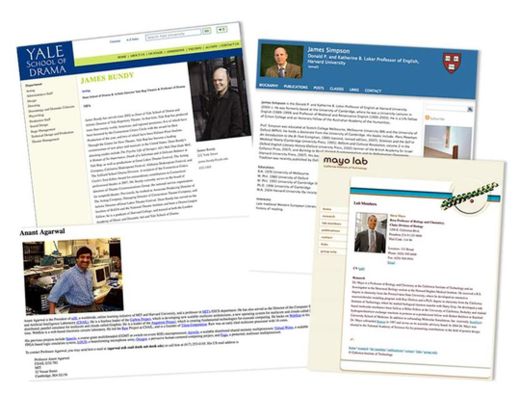
Emotions flickering across the face do seem to have a leftward bias. In his 1872 study of the muscular control of smiles and frowns, Charles Darwin found that facial expression tends to begin with the muscles on the left side of the face; the final, overall emotional expression also tends to be accentuated on the left side, he noted. Neuroscientists investigating the asymmetry of facial expression now know that the left side of the face is controlled by nerves that originate from the right side of the brain, where facial expressions are processed. So the left-sided bias makes sense strictly from a wiring point of view.
And there is some evidence to suggest that people are in some way aware of this facial expression asymmetry when sitting for a photograph. A 1973 Nature study showed that people tend to present the left side of their face when posing for a portrait, and that the bias is even more pronounced in women than in men.
Left- versus right-facing photographs also seem to affect perceptions of the photographic subjects. In a 2010 paper published in the journal Laterality, study participants were more likely to guess that photographic subjects were scientists if the photographs showed their right cheeks, and more likely to place them in the arts and humanities if the photos showed their left cheeks. The reason, it was proposed, is that right-sided expressions are associated with logic and a lack of emotion.
But does that perception translate to how people actually choose to present themselves? A team led by Owen Churches, a psychologist at the University of South Australia, Magill, wondered if scientists unconsciously face left or right when they pose for the photographs used online for university home pages. So the researchers chose 30 university Web sites at random from the Times Higher Education World University Rankings and harvested the departmental photographs from all faculty members. After excluding any photographs that did not show the full face or were cluttered with objects, they had independent judges categorize the 5829 faces as left- or right-leaning. Then, they built a statistical model to see how well a person's academic field could be predicted by which cheek they present in their photos. The model compensated for the known sex bias.
Scientists, engineers, and mathematicians are each significantly more likely to show their right cheek than their left, while their colleagues in the arts and humanities are each more likely to show their left, the team reports in PLoS ONE. But that bias wasn't completely consistent. For example, while English language and literature scholars showed the left cheek and engineers showed the right, psychologists were more difficult to categorize. The photos of male psychologists reflected almost no consistent preference for facing left or right, but female psychologists were more than 20% more likely to show their left cheek. That is as strong a bias as the right-cheeked male mathematicians.
The study is "an interesting and fun pop psychology story," says Rachael Jack, a researcher of visual perception at the University of Glasgow in the United Kingdom, who faces dead center in her own home page photo. She doesn't question the results, but rather the study's assumption that scientists consider themselves less emotional, which she calls "far-fetched." To prove that the cheek bias really reflects how scientists see themselves, she says, the next step is to show that "presenting the left rather than the right side of the face indeed gives rise to differences in perceptual judgments of emotionality, and related social traits such as attractiveness, warmth, [and] approachability." To do that, scientists would need to use photos of strangers with left- and right-cheeked poses to test how the academics judge people's personalities.



Reader Comments
to our Newsletter